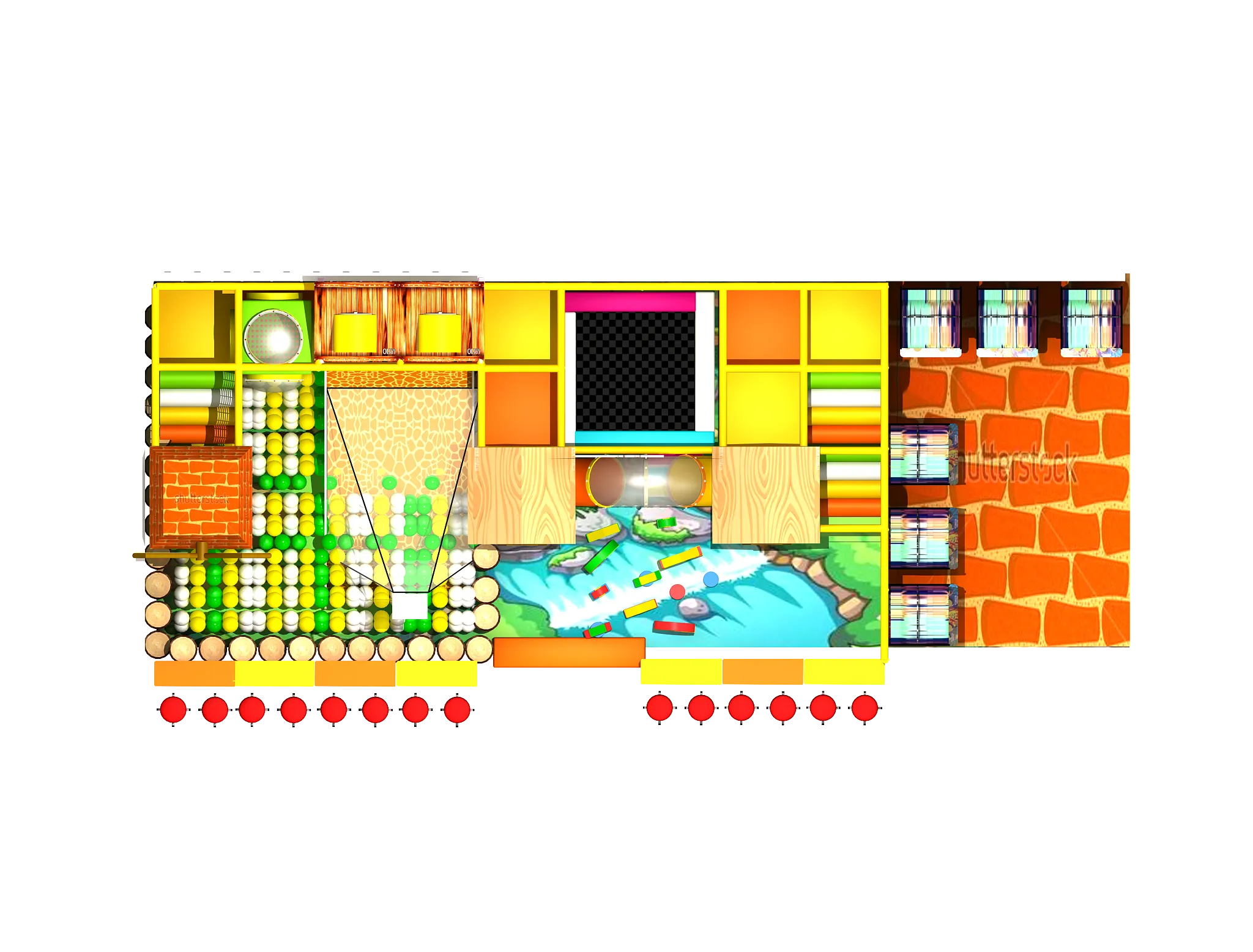1. Core Features
A kids indoor playground is a dedicated, enclosed space designed to provide children with a safe, engaging environment for play, exercise, and social interaction—regardless of outdoor weather conditions (e.g., rain, snow, or extreme temperatures). It typically combines a variety of play structures and activity zones, tailored to different age groups (usually 1–12 years old), to stimulate physical movement, imagination, and cognitive development.
Unlike outdoor playgrounds, indoor versions prioritize controlled safety (e.g., soft flooring, enclosed spaces) and year-round usability, making them ideal for malls, kindergartens, family entertainment centers, or even large residential homes.
2. Design & Activity Zones
Indoor playgrounds are often divided into age-specific zones to ensure suitability and safety, with common components including:
- Toddler Zone (1–3 Years Old): Features low-height soft play structures (e.g., foam mats, mini slides, plush tunnels, and sensory activity panels). These elements are designed to support basic motor skills (crawling, walking, grasping) without risk of falls, and often include bright colors and soft textures to engage young children’s senses.
- Junior Zone (4–8 Years Old): Includes more dynamic structures such as small climbing walls (with non-slip grips), tube slides (straight or spiral), ball pits (filled with soft, non-toxic plastic balls), and mini obstacle courses. This zone encourages active play, balance, and coordination, while also providing spaces for group games (e.g., hide-and-seek in soft play caves).
- Creative & Social Zones: Many indoor playgrounds integrate areas for imaginative play, such as mini “pretend play” corners (e.g., toy kitchens, doctor’s kits, or small playhouses like the British-style children’s castle). There may also be open spaces for group activities (e.g., storytime, art workshops, or dance games) to foster social interaction among kids.
3. Safety & Durability
Safety is the top priority in kids indoor playground design, with key safeguards including:
- Soft Flooring: The entire play area is covered with shock-absorbing materials, such as EVA foam mats, rubberized flooring, or padded carpeting—reducing the risk of injury from falls. All flooring edges are sealed to avoid tripping hazards.
- Non-Toxic Materials: All structures, fabrics, and paints are made from child-safe, non-toxic materials (compliant with standards like EU EN 71 and US ASTM F963). Plastic components are BPA-free, and fabrics (e.g., on soft play mats or tunnels) are hypoallergenic and easy to clean.
- Structural Stability: Play structures (e.g., slides, climbing frames) are securely anchored to the floor or walls to prevent tipping. Sharp corners or protruding parts are rounded or covered with soft padding.
- Easy Maintenance: Surfaces are designed to resist stains, scratches, and wear from frequent use. Most components can be wiped clean with mild, child-safe disinfectants, ensuring hygiene for daily play.
4. Applicable Scenarios
Kids indoor playgrounds are versatile and suitable for multiple settings:
- Commercial Spaces: Malls, shopping centers, and family entertainment parks often include indoor playgrounds as a way to attract families and extend customer stay time.
- Educational Institutions: Kindergartens, preschools, or after-school programs use smaller indoor playgrounds to complement physical education activities and provide playtime during bad weather.
- Residential Use: For families with large indoor spaces (e.g., basements or spare rooms), compact indoor playground sets (e.g., mini slides, small ball pits, or foldable play tents) offer a convenient way for kids to play safely at home.

